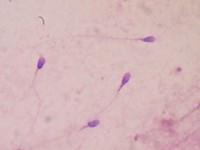Advertisement
Grab your lab coat. Let's get started
Welcome!
Welcome!
Create an account below to get 6 C&EN articles per month, receive newsletters and more - all free.
It seems this is your first time logging in online. Please enter the following information to continue.
As an ACS member you automatically get access to this site. All we need is few more details to create your reading experience.
Not you? Sign in with a different account.
Not you? Sign in with a different account.
ERROR 1
ERROR 1
ERROR 2
ERROR 2
ERROR 2
ERROR 2
ERROR 2
Password and Confirm password must match.
If you have an ACS member number, please enter it here so we can link this account to your membership. (optional)
ERROR 2
ACS values your privacy. By submitting your information, you are gaining access to C&EN and subscribing to our weekly newsletter. We use the information you provide to make your reading experience better, and we will never sell your data to third party members.
Analytical Chemistry
Sifting A Biomarker From The Chaff
Biomarkers: Researchers separate and detect a controversial potential biomarker for cancer
by Sarah Webb
June 15, 2011
As researchers identify potential biomarkers for disease, they need assays that accurately differentiate them from other biological molecules. A new study describes a method for separating a possible cancer biomarker from similar compounds and for reliably detecting it in urine and serum (Anal. Chem., DOI: 10.1021/ac201003r). The method provides a valuable tool for determining whether this biomarker predicts prostate cancer risk or disease prognosis, the researchers say.
In 2009, a Nature study pointed to urine levels of sarcosine, or N-methyl glycine, as a hallmark of advancing prostate cancer (DOI: 10.1038/nature07762). However, other small studies have since questioned sarcosine’s value as a biomarker. Analytical chemist Stephen Fox, epidemiologist Tamra Meyer, and their colleagues at the National Cancer Institute wanted to understand the reason behind this conflicting data. They wondered whether the assays the various papers had used might have measured a mixture of sarcosine and its structural isomers, the common biomolecules α- and β-alanine.
To separate sarcosine from the two forms of alanine, the researchers modified a mixture of the compounds using the reagent dansyl chloride. Once they had done so, the researchers could easily separate the three compounds using reverse phase chromatography. By comparison, the researchers demonstrated that the reverse-phase conditions used in a previous study did not separate sarcosine from alanine (Anal. Chem., DOI: 10.1021/ac1019914). Using mass spectrometry, the researchers then determined the amount of sarcosine in urine and serum samples from a few dozen healthy individuals. The method could detect 5 ng of sarcosine per milliliter of serum -- well below the natural levels they measured in the samples, which were typically greater than 50 ng/mL.
The study highlights an underappreciated problem that plagues the search for biomarkers, says Daniel Liebler of the Vanderbilt University School of Medicine: “There are contaminants that could really interfere with assays.”
Liebler praises the careful method development in this study. This initial work can’t reveal whether sarcosine will prove useful as a prostate cancer biomarker, he points out. However, he says, it provides a technique that any analytical laboratory can use for larger studies that could tease out sarcosine’s true biological role.
The team at the National Cancer Institute is already doing so. It is comparing serum sarcosine levels in more than 1,000 men who have prostate cancer with the levels of men who don’t, Meyer says.



Join the conversation
Contact the reporter
Submit a Letter to the Editor for publication
Engage with us on Twitter